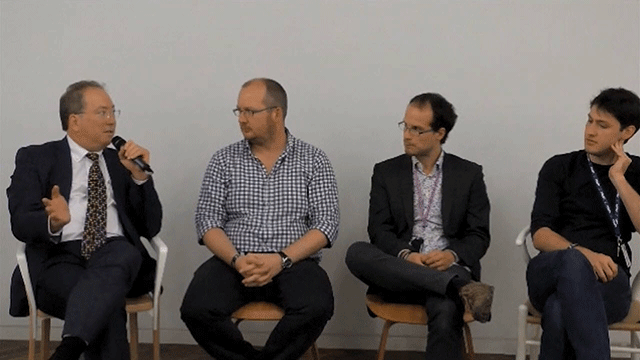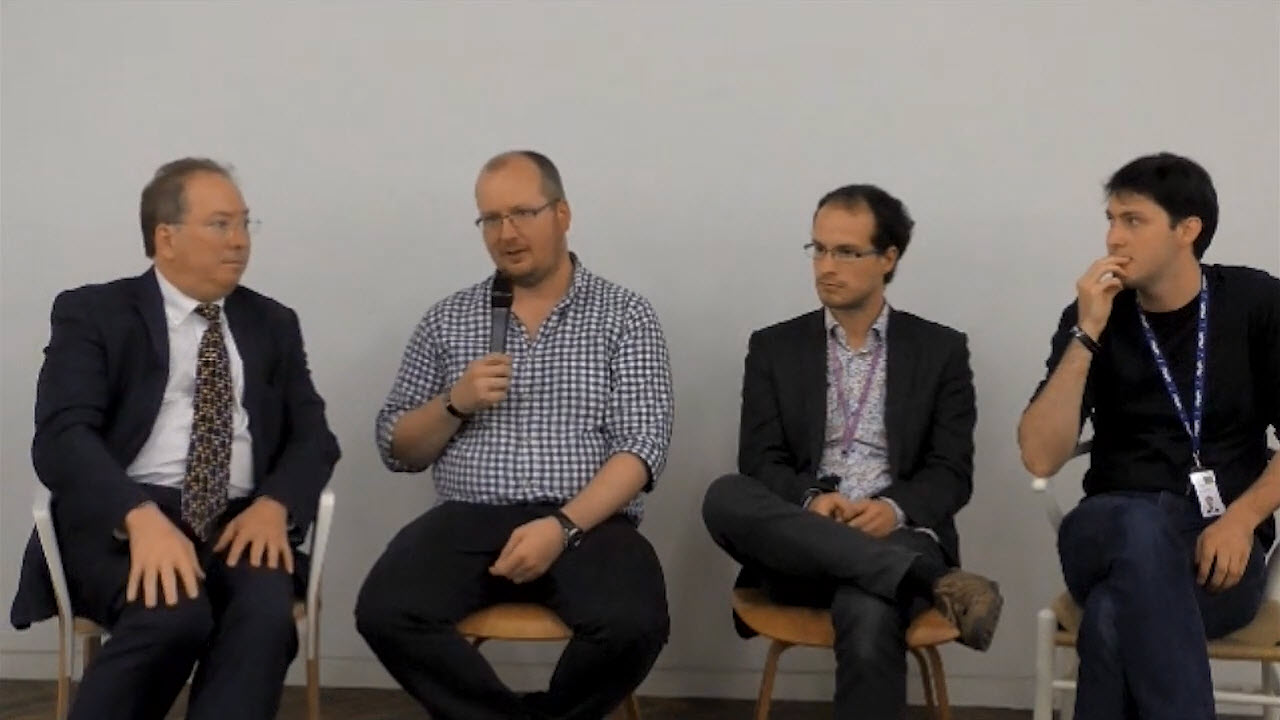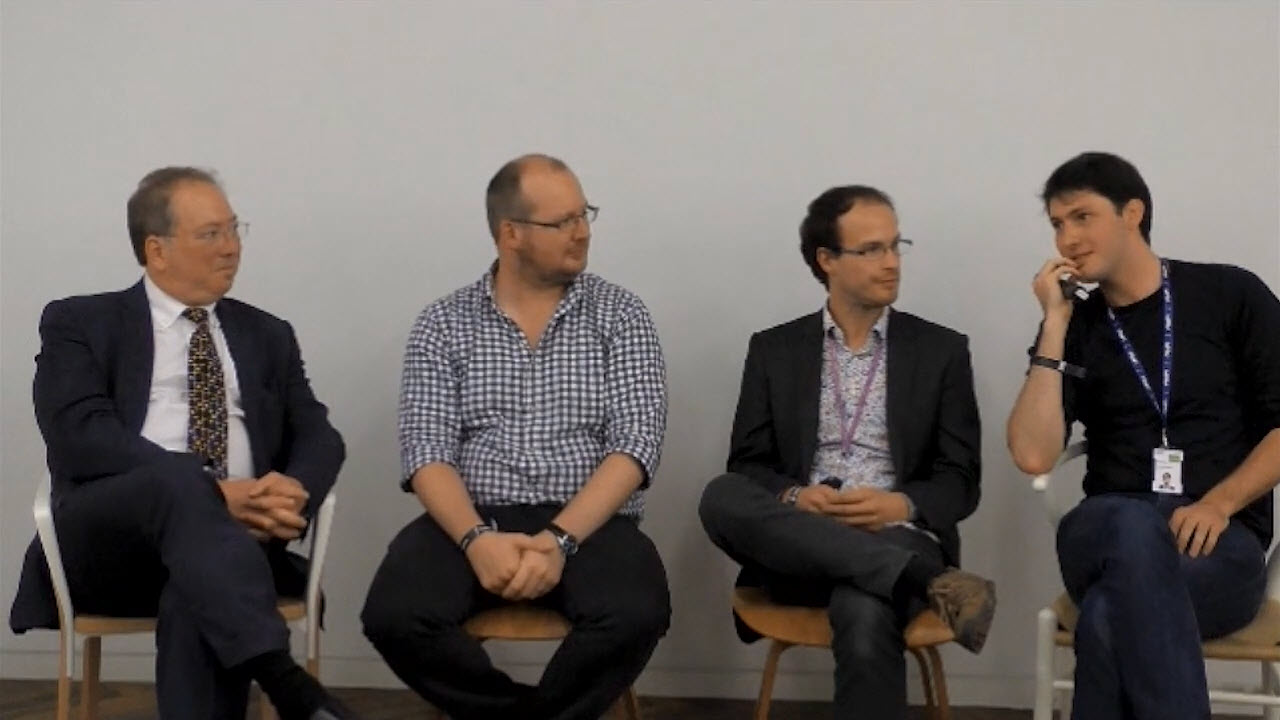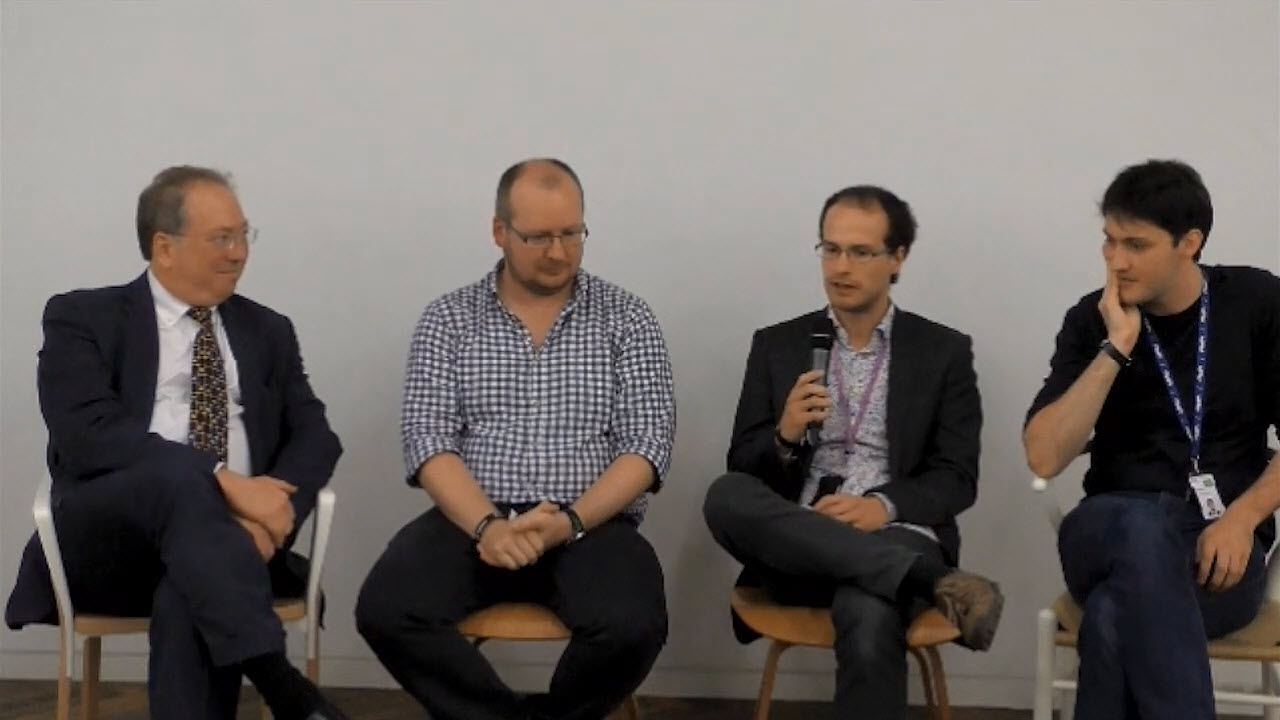Fireside Chat: Blockchain Security, Scalability, and Energy Consumption

A recent Hyperledger meetup in London culminated with a lively discussion. The panel included Michael Mainelli of Z/Yen Group, Joseph Pindar of Gemalto, and Simon Stone and Tom Appleyard of IBM.
How secure is blockchain?
The panel received questions from the audience and the first question was about the adoption rate of blockchain and mutually distributed ledgers. Michael highlighted two key points as to why adoption is slow:
- New technology. Just like any other new innovation, there’s a knee-jerk response to blockchain that it is insecure.
- Economic power structure. The adoption of blockchain is not in everybody’s interest. Most firms already have trouble implementing a normal straightforward database never mind the shared ledger approach of blockchain.
“The barrier to [blockchain] adoption is going to be a lot harder particularly when the alternative is why don’t we just nominate one person to be in charge of the entire thing?”
—Michael Mainelli, Z/Yen Group
#hyperledgerldn, @mrmainelli led an interesting discussion tonight in consensus alg & TCP, IP. pic.twitter.com/akn8jfbOha
— yiseul (@yiseulcho) September 6, 2016
Despite the problems with adoption, Simon was able to point out that “bitcoin has helped popularize the technology and has given us the chance to think about how we could use the technology to solve problems.”
Joseph also mentioned that another issue for the slow adoption is the underlying technology of blockchain wherein it is a distributed system at the very core is inherently insecure. However, he conceded that since blockchain “is a rather simple low-level thing on which you can then start accelerating distributed use cases, architectures, and so forth. That’s ultimately what’s going to make people money.”
“The fact that blockchain enables distributed audits opens up massive opportunity.”
—Joseph Pindar, Gemalto
The following question posed was if blockchain could be a bit like TCP/IP, where it’s very successful and no one knows it’s there? In response, Joseph half-joked, “the future of blockchain is trusted Internet and it’s going to replace TCP/IP.”
Does it scale well?
The next issue the panel tacked was scalability and whether or not the technology would be able to scale once there are thousands of blockchains working together.
Joseph took the lead on this one and he compared the potential scaling of blockchain to that of routers in the Internet. He explained, “we’ve gone down the rabbit hole when we talk about public blockchains. The assumption that everyone within the blockchain has to see these things. Scalability isn’t just about latency and throughput, it’s about how to keep partition of the system, such that we have multiple different blockchains working together doing their specific thing and you don’t have to have one blockchain to do it all.”
“When you start thinking about multiple different blockchains or distributed ledgers working together and having interfaces between them, it’s kind of like talking about routers in the Internet.” —Joseph Pindar, Gemalto
Will blockchain have the energy consumption of bitcoin?
The last issue raised was with regards to energy consumption. Michael broke this down into two parts—why is it working and why is the actual cost at the moment insignificant?
- The system is selling forward. People are willing to contribute their energy because of a future perceived value in return.
- Free energy. Not everyone is paying for their energy consumption. He referenced a Swedish server farm where this was the case.
Aside from those, we’ve already seen the potential cost savings blockchain can do for business networks. While its cost in terms of power consumed compared to bitcoin isn’t perfectly clear at this point, the savings in other areas being streamlined is hard to dispute.
“If we’re talk about the cost of transactions alone, a lot can be said about the potential savings in trade finance by cutting down process time from days to minutes.”
—Simon Stone, IBM
Want details? Watch the video!
Table of contents
|
Further reading
- IBM Engineers: Blockchain Can Streamline International Trade
- Blockchain as a Single, Persistent Publish / Subscribe Queue
- The Difference with Blockchain
- Managing Risk and Building Trust for Blockchain in Finance
About the experts













